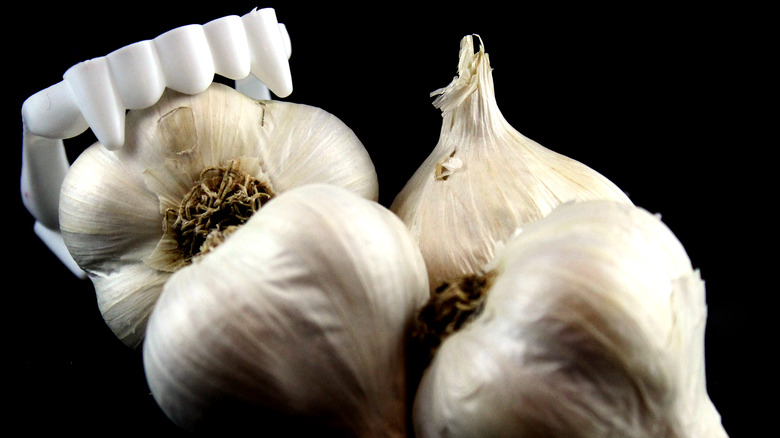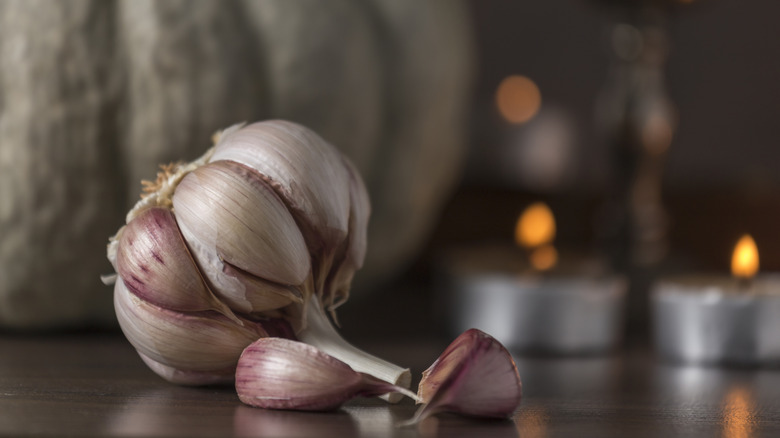Why Vampires Hate Garlic, According To Folklore
Vampires have been a staple of the horror genre for generations, but what's the deal with garlic? The connection between the batty monsters and the funky-scented allium is multifaceted, weaving together folklore, superstitions, and culinary chemistry.
The fable can be traced back to medieval Europe, where storied illusions — and illness — ran rampant. For instance, porphyria, a rare blood disease that may become intensified by the consumption of garlic, results in pale skin, a distinctive characteristic of folkloric vampires. Many people also believed garlic possessed potent protective properties to ward off evil. Truth be told, garlic does indeed contain an antibiotic: allicin, which is activated when cloves are minced or chopped. Word spread that the pungent aroma of the health-giving compound was toxic to vampires, who were known for their acute senses. Additionally, when garlic is eaten, it releases an odor through the skin and breath, one allegedly strong enough to deter vampires from getting too close to their potential victims. In essence, the root vegetable was considered a safeguard against the undead — and ailments.
Garlic also held symbolic significance, as historical Europeans believed it represented purity and strength. As such, people not only ate more garlic, but they also hung garlic bulbs in their homes, displayed them around doorways and windows, and wore them as amulets.
To repel vampires, eat, wear, or hang garlic
Halloween, with its eerie charm and deep historical roots, has further popularized vampire lore. However, the connection between garlic and vampires extends past superstitions and decorations: It has seeped into popular culture and literature, especially through one particularly iconic figure. "Dracula," Bram Stoker's 1897 novel, cemented the idea that the Count could not bear the smell of garlic. This portrayal has influenced countless adaptations in movies, TV shows, and other media, in which garlic remains a powerful vampire deterrent.
Although people's belief in vampires has significantly waned over the years, the creatures' association with garlic remains a beloved aspect of autumnal rituals. Some folks may even rustle up garlic-inspired recipes to infuse a taste of mythology into their festivities.
While Halloween provides an opportunity to revel in these rich parables, it's important to remember that the legend of garlic-fearing vampires has transcended hundreds of years of storytelling. So, if you hang strings of garlic bulbs over your windows and doors or savor garlic-filled treats on or around All Hallows' Eve, you're not just embracing the spirit of the holiday — you're paying homage to an age-old tale that has withstood the test of time.

